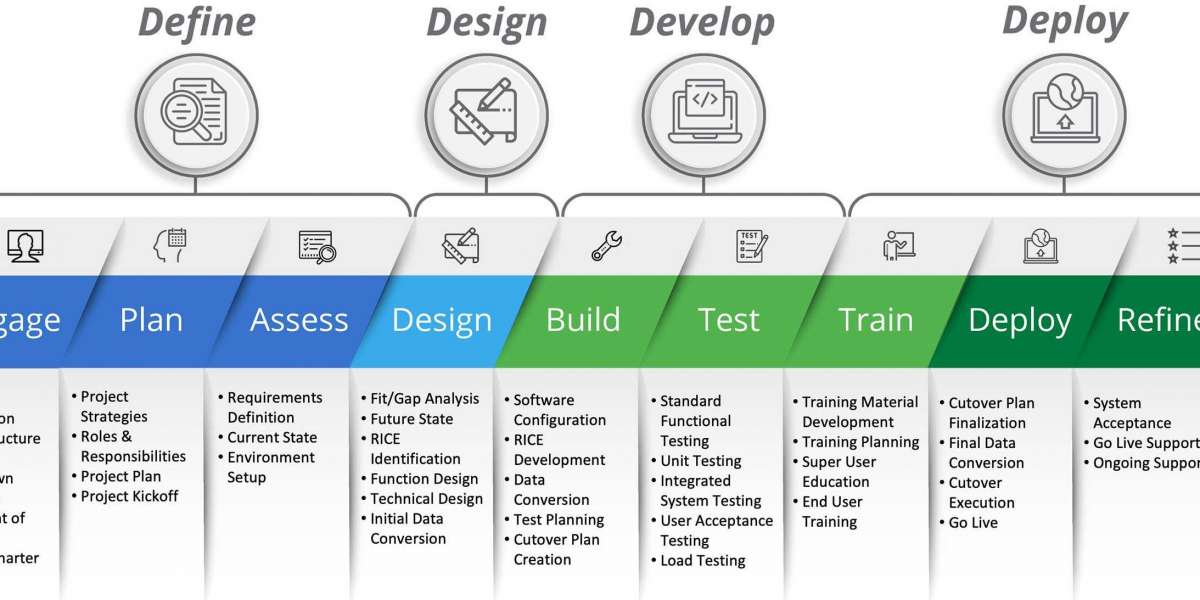JD Edwards, a robust enterprise resource planning (ERP) software, offers comprehensive solutions for businesses across various industries. Implementing JD Edwards can be a complex process, but with proper planning and adherence to best practices, organizations can achieve a successful deployment. In this blog post, we will delve into the key considerations, strategies, and best practices to ensure a smooth JD Edwards implementation.
Establish Clear Objectives
A successful JD Edwards implementation starts with a clear understanding of organizational goals and objectives. Define the specific business requirements, processes, and outcomes you aim to achieve with JD Edwards. Engage stakeholders from different departments to gather their input and align expectations. Documenting these objectives will serve as a roadmap for the implementation process and guide decision-making throughout.
Formulate a Comprehensive Implementation Plan
Crafting a well-structured implementation plan is crucial for the success of any JD Edwards deployment. The plan should outline the timeline, tasks, milestones, and resource allocation required for each phase of the project. Consider factors like data migration, system setup, testing, and end-user training. Break down the implementation into manageable stages to ensure smooth progression and minimize disruption to daily operations. Regularly review and update the plan to accommodate any changes or challenges that arise.
Engage with an Experienced Implementation Team
Collaborating with a skilled and experienced implementation team can significantly enhance the success of your JD Edwards deployment. Engage consultants or partners who possess in-depth knowledge of JD Edwards and have a track record of successful implementations. Their expertise can help streamline the implementation process, address technical complexities, and provide guidance on industry-specific best practices. Ensure your team consists of individuals with strong project management, technical, and functional skills to effectively execute the implementation plan.
Conduct Thorough System Assessment and Readiness
Before embarking on the implementation, perform a comprehensive assessment of your existing systems, infrastructure, and data. Identify potential gaps, integration requirements, and system compatibility. Ensure your hardware and network infrastructure meet the recommended specifications for JD Edwards. Conduct data cleansing and data mapping exercises to streamline the migration process. Additionally, evaluate the readiness of your organization, including the availability of resources, user training needs, and change management strategies.
Prioritize User Training and Change Management
User adoption is crucial for the success of any software implementation. Allocate sufficient time and resources for comprehensive user training programs. Develop training materials, conduct workshops, and provide hands-on exercises to familiarize users with JD Edwards functionality. Additionally, establish a robust change management strategy to address resistance to change and ensure smooth transition. Communicate the benefits of JD Edwards to all stakeholders and involve them throughout the implementation journey.
Implement Strong Data Governance
Data integrity is essential for accurate reporting and efficient processes within JD Edwards. Establish data governance policies and procedures to maintain data quality, consistency, and security. Define data ownership, establish data validation rules, and implement regular data audits. Consider data archiving and purging strategies to optimize system performance. Collaborate with key stakeholders to define data governance guidelines and ensure adherence throughout the organization.
Conclusion
Successful JD Edwards implementation requires careful planning, strategic execution, and adherence to best practices. By setting clear objectives, formulating a comprehensive plan, engaging with experienced implementation teams, assessing system readiness, prioritizing user training, and implementing strong data governance, organizations can achieve a seamless JD Edwards deployment. Remember, each implementation is unique, so tailor.





